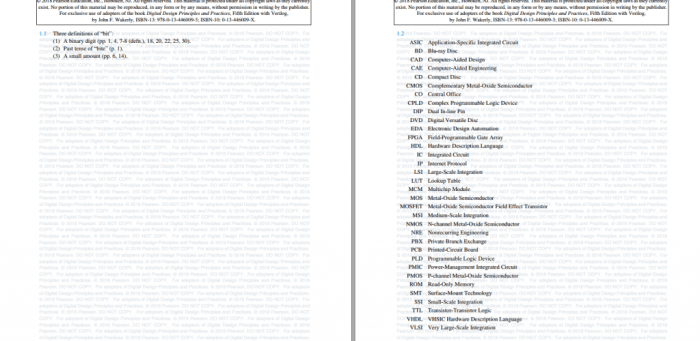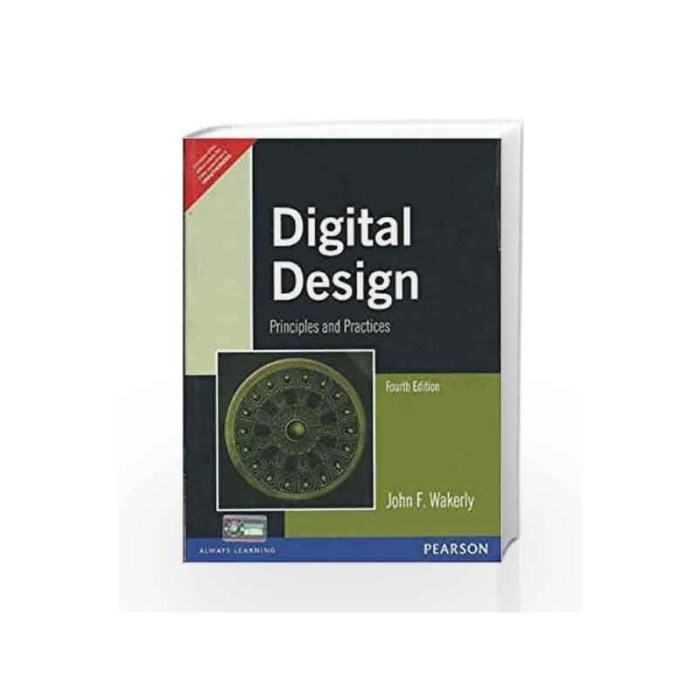Digital design principles and practices 5th edition pdf, the definitive guide to the foundational principles and cutting-edge practices of digital design, offers an unparalleled exploration of this dynamic field. With its comprehensive coverage, engaging insights, and practical applications, this indispensable resource empowers designers of all levels to create impactful and user-centric digital experiences.
Through a captivating narrative, the book delves into the core principles of digital design, including hierarchy, balance, contrast, repetition, and alignment. It then explores the essential practices that drive successful digital design projects, such as wireframing, prototyping, user testing, and iterative design.
Introduction

Digital design principles and practices are a set of guidelines and techniques that help designers create effective and engaging digital products. These principles and practices are essential for creating digital products that are easy to use, visually appealing, and meet the needs of users.
The importance of digital design principles and practices cannot be overstated. In today’s digital world, users have high expectations for the digital products they use. They expect these products to be easy to use, visually appealing, and tailored to their specific needs.
Digital design principles and practices help designers meet these expectations by providing them with a framework for creating effective and engaging digital products.
The Principles of Digital Design
The basic principles of digital design include:
- Hierarchy:The principle of hierarchy helps designers create a visual hierarchy in their designs. This hierarchy helps users understand the most important elements of a design and the relationship between these elements.
- Balance:The principle of balance helps designers create designs that are visually balanced. This balance can be achieved through the use of symmetry, asymmetry, or radial balance.
- Contrast:The principle of contrast helps designers create designs that are visually interesting. This contrast can be achieved through the use of different colors, shapes, or textures.
- Repetition:The principle of repetition helps designers create designs that are visually unified. This repetition can be achieved through the use of repeated elements, such as colors, shapes, or textures.
- Alignment:The principle of alignment helps designers create designs that are visually organized. This alignment can be achieved through the use of aligned elements, such as text, images, or buttons.
The Practices of Digital Design

The common practices of digital design include:
- Wireframing:Wireframing is a process of creating a visual representation of a digital product. This representation helps designers plan the layout of a product and identify potential problems.
- Prototyping:Prototyping is a process of creating a working model of a digital product. This model helps designers test the functionality of a product and get feedback from users.
- User testing:User testing is a process of testing a digital product with real users. This testing helps designers identify problems with a product and make improvements.
- Iterative design:Iterative design is a process of designing a digital product in a series of iterations. This process helps designers improve the quality of a product over time.
Tools for Digital Design: Digital Design Principles And Practices 5th Edition Pdf
There are a variety of tools available for digital design. Some of the most popular tools include:
- Adobe Photoshop:Adobe Photoshop is a raster graphics editor that is used for creating and editing images.
- Adobe Illustrator:Adobe Illustrator is a vector graphics editor that is used for creating and editing vector graphics.
- Sketch:Sketch is a vector graphics editor that is specifically designed for digital design.
- Figma:Figma is a collaborative design tool that allows multiple designers to work on the same project at the same time.
Case Studies

There are many successful digital design projects that have been created using digital design principles and practices. Some of these projects include:
- The website of the New York Times:The website of the New York Times is a well-designed website that is easy to use and visually appealing. The website uses a variety of digital design principles and practices, such as hierarchy, balance, and contrast.
- The app of the Airbnb:The app of the Airbnb is a well-designed app that is easy to use and visually appealing. The app uses a variety of digital design principles and practices, such as wireframing, prototyping, and user testing.
- The website of the Apple:The website of the Apple is a well-designed website that is easy to use and visually appealing. The website uses a variety of digital design principles and practices, such as simplicity, white space, and typography.
Best Practices for Digital Design

There are a number of best practices that can be followed to create effective and engaging digital products. These best practices include:
- Keep it simple:Digital products should be simple to use and understand. Avoid using complex designs or confusing navigation.
- Use white space effectively:White space can be used to improve the readability of text and make designs more visually appealing.
- Choose colors wisely:The colors used in a design can have a significant impact on the overall look and feel of a product.
- Test your designs thoroughly:Testing your designs with real users is essential for identifying problems and making improvements.
Helpful Answers
What are the key principles of digital design?
The key principles of digital design include hierarchy, balance, contrast, repetition, and alignment.
What are the common practices of digital design?
The common practices of digital design include wireframing, prototyping, user testing, and iterative design.
What tools are available for digital design?
Common tools for digital design include Adobe Photoshop, Adobe Illustrator, Sketch, and Figma.